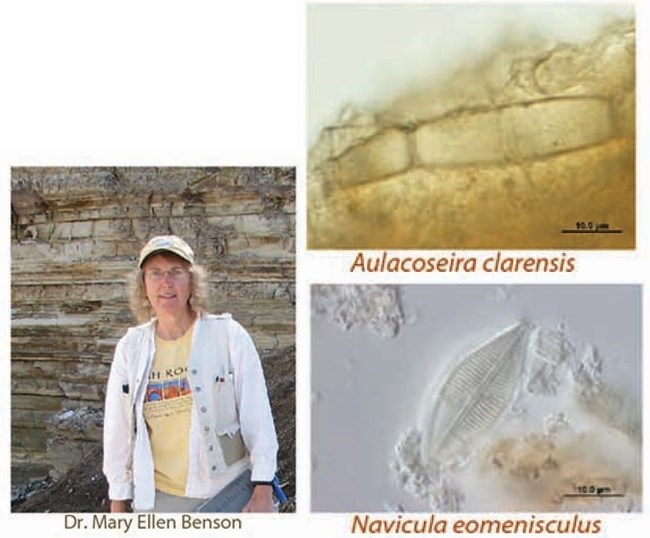DiatomsOn the lake bottom, a cycle occurred involving the weathered ash and microscopic algae called diatoms. As the lake filled with ash, blooms of diatoms- which may have looked like slimy mats- flourished from the nutrients in the ash. Eventually, massive colonies of the diatoms died and their frustules (outer cell walls) fell to the bottom of the lake and formed a fine layer on top of the clay. This "couplet" of fine layers of clay and ash entombed many organisms that became fossils in layers called paper shale. 
Dr. Mary Ellen BensonDr. Mary Ellen Benson's research resulted in the naming of five new species including Aulacoseira clarensis and Navicula eomenisculus.The diatoms of late Eocene Lake Florissant indicate a variety of environments within and around the ancient lake1. Dr. Benson's research put Florissant on the map for freshwater diatoms, as this assemblage is the most diverse early diatom flora reported from the geologic record2.
Aulacoseira clarensis, Diatoma tenuis and Synedra are the most common diatoms in the Florissant Formation at Clare's Quarry. The diatoms from Clare's Quarry and Florissant Fossil Beds National Monument include 33 genera, 14 of which have first occurrences in the Florissant Formation2.

|
Last updated: September 17, 2022
